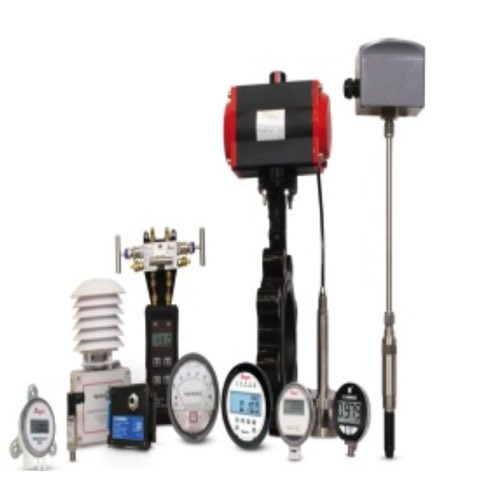Air Velocity

RSP Supply carries a full line of air velocity products designed for precise airflow measurement and monitoring in HVAC, clean room, and industrial ventilation systems. These devices ensure proper air movement, system efficiency, and compliance with performance standards in controlled environments. Air velocity instruments are engineered for both field and fixed installations. Common product types include handheld anemometers, vane-style meters, hot-wire probes, and velocity transmitters. Each device measures airflow accurately and with minimal disturbance, delivering real-time data for system adjustments and diagnostics.
Many air velocity meters and sensors feature digital displays, temperature compensation, and selectable measurement units for flexibility. Durable construction and compatibility with analog or digital outputs make them easy to integrate into existing building automation systems. Whether ensuring balanced ventilation or verifying fume hood performance, air velocity products are essential tools for maintaining safe and efficient operations.
FAQs
Q: What are air velocity products used for?
Air velocity products measure and monitor airflow in HVAC systems, ducts, clean rooms, and ventilation systems to maintain proper air balance and efficiency.
Q: What types of air velocity instruments are available?
Common types include handheld anemometers, hot-wire probes, vane-style meters, and fixed velocity transmitters for continuous monitoring.
Q: Can air velocity sensors be integrated with building automation systems?
Yes, most air velocity sensors support analog or digital outputs, allowing seamless integration into HVAC and building control systems.
Q: Why is temperature compensation important in air velocity measurement?
Temperature compensation ensures accurate airflow readings even when environmental conditions fluctuate.
Q: What industries use air velocity monitoring equipment?
Air velocity products are widely used in HVAC, pharmaceutical, semiconductor, clean room, laboratory, and manufacturing applications.
Why Buy Air Velocity Products from RSP Supply
RSP Supply offers high-quality air velocity products from trusted brands, backed by expert support and fast shipping. Our selection ensures reliable, accurate airflow measurement for HVAC, clean room, and industrial environments.

